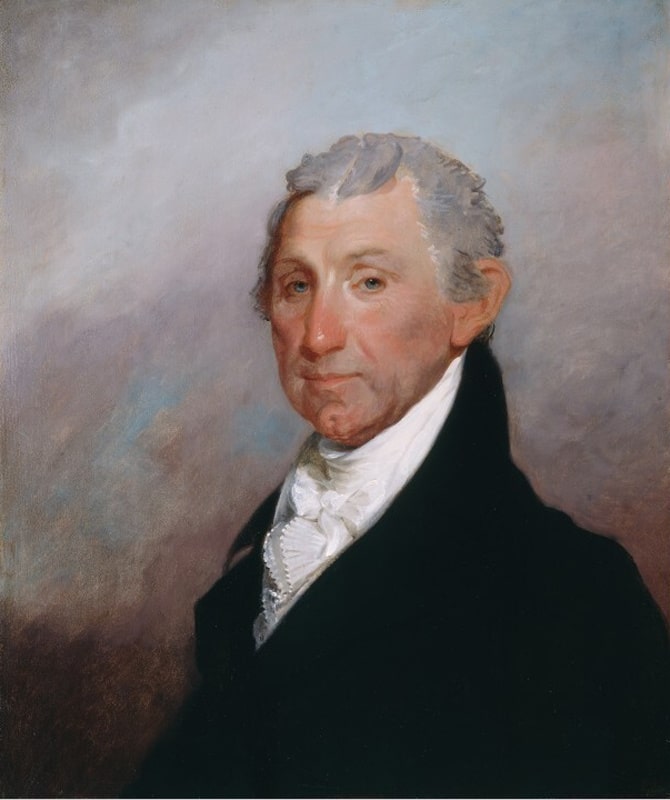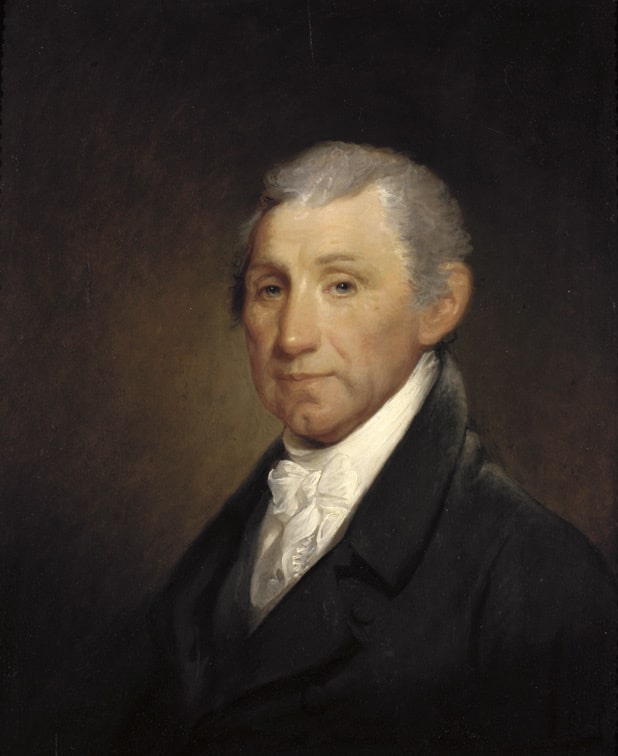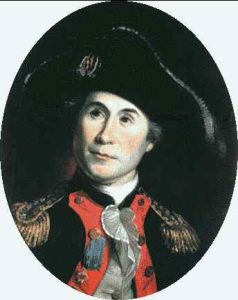Contents

Contents
Quick facts
- Born: 28 April 1758 in Westmoreland County, Virginia.
- James Monroe was the fifth President of the United States, serving two terms from 1817 to 1825, a period known as the “Era of Good Feelings” due to the decline in partisan politics.
- He is best known for the Monroe Doctrine (1823), a cornerstone of U.S. foreign policy that opposed European colonialism in the Americas.
- Monroe served as an officer in the Continental Army during the American Revolutionary War and was wounded at the Battle of Trenton.
- He held several important diplomatic positions, including Minister to France and to the United Kingdom, and also served as Secretary of State and Secretary of War under President Madison.
- Monroe played a significant role in the Louisiana Purchase negotiations while he was the Minister to France.
- As president, he supported internal improvements and oversaw the Missouri Compromise, addressing the issue of slavery’s expansion into new territories.
- Died: 4 July 1831 in New York, NY.
- Buried at Hollywood Cemetery in Richmond, Virginia.
Biography
James Monroe, fifth president of the United States, was born on Monroe’s Creek, a tributary of the Potomac River, in Westmoreland County, Virginia, on 28 April 1758. His father, Spence Monroe, was of Scotch descent and his mother, Elizabeth Jones, was of Welsh descent. At the age of 16 he entered the College of William and Mary in Williamsburg, Virginia — but he left in 1776 to take part in the American Revolutionary War.
Monroe enlisted in the Third Virginia Regiment, where he became a lieutenant, and subsequently took part in the battles of Harlem Heights, White Plains, Trenton (where he was wounded), Brandywine, Germantown, and Monmouth. In November 1777 he was appointed volunteer aide-de-camp to William Alexander — Lord Stirling, with the rank of major, and thereby lost his rank in the Continental Army. But in the following year, at General Washington’s solicitation, he received a commission as lieutenant-colonel in a new regiment to be raised in Virginia.
In 1780 he began the study of law under Thomas Jefferson, then governor of Virginia, and between the two there developed an intimacy and a sympathy that had a powerful influence upon Monroe’s later career. In 1782 he was elected to the Virginia House of Delegates, and though only 24, he was chosen a member of the governor’s council. He served in the Congress of the Confederation from 1783 to 1786 where he was conspicuous for his vigorous insistence upon the right of the United States to the navigation of the Mississippi River, and for his attempt, in 1785, to secure for the weak Congress the power to regulate commerce — in order to remove one of the great defects in the existing central government.
On retiring from Congress Monroe began the practice of law at Fredericksburg, Virginia. He was chosen a member of the Virginia House of Delegates in 1787; in 1788 was a member of the State Convention that ratified the Constitution of the United States for Virginia. In 1790 he was elected to the U.S. Senate to fill the vacancy caused by the death of William Grayson. There he vigorously opposed Washington’s administration. Nevertheless, on 27 May 1794 Washington nominated him as minister to France.
It was the hope of the administration that Monroe’s well-known French sympathies would secure for him a favorable reception, and that his appointment would also conciliate the friends of France in the United States. However his warm reception in France and his enthusiastic Republicanism displeased the Federalists at home. And he did nothing to reconcile the French to the Jay Treaty, which they regarded as a violation of the French Treaty of Alliance of 1778 and as a possible casus belli. The administration therefore decided that he was unable to represent his government properly and in late 1796 recalled him.
Monroe returned to the U.S. in the spring of 1797, and the following December published a defense of his actions in a pamphlet of 500 pages entitled A View of the Conduct of the Executive in the Foreign Affairs of the United States. Washington seems never to have forgiven Monroe for this, though Monroe’s opinion of Washington and Jay underwent a change in his later years.
In 1799 Monroe was chosen Governor of Virginia and was twice re-elected, serving until 1802. At this time there was much uneasiness in the United States as a result of Spain’s restoration of Louisiana to France by the secret treaty of San Ildefonso (Oct-1800) and the subsequent withdrawal of the right of deposit
at New Orleans by the Spanish intendant greatly increased this feeling — leading to much talk of war.
Resolved upon peaceful measures, President Jefferson in January 1803 appointed Monroe Envoy Extraordinary and Minister Plenipotentiary to France. There he aided Robert R. Livingston, the resident minister, in purchasing the territory at the mouth of the Mississippi, including the island of New Orleans. At the same time he cooperated with Charles Pinckney, the minister at Madrid, in securing from Spain the cession of East and West Florida.
On 18 April Monroe was further commissioned as the minister to Great Britain. He joined Livingston in Paris on 12 April after the negotiations were well under way; and the two ministers, on finding Napoleon willing to dispose of the entire province of Louisiana, decided to exceed their instructions and effect its purchase. Accordingly, on 30 April they signed a treaty and two conventions, whereby France sold Louisiana to the United States.
In July 1803 Monroe left Paris and entered upon his duties in London. In the autumn of 1804 he proceeded to Madrid to assist Pinckney in his efforts to secure the definition of the Louisiana boundaries and the acquisition of the Floridas. After negotiating with Don Pedro de Cevallos, the Spanish minister of foreign affairs, from January to May 1805 without success, Monroe returned to London and resumed his negotiations — which had been interrupted by his journey to Spain — concerning the impressment of American seamen and the seizure of American vessels. As the British ministry was reluctant to discuss these vexed questions, little progress was made and in May 1806 Jefferson ordered William Pinkney of Maryland to assist Monroe.
The British government appointed Lords Auckland and Holland as negotiators and the result of the deliberations was the treaty of 31 December 1806, which contained no provision against impressments and provided no indemnity for the seizure of goods and vessels. In passing over these matters Monroe and Pinkney had disregarded their instructions, and Jefferson was so displeased with the treaty that he refused to present it to the Senate for ratification and returned it to England for revision. Just as the negotiations were re-opened, however, the questions were further complicated and their settlement delayed by the attack on American frigate Chesapeake
by the British ship Leopard
.
Monroe returned to the United States in December 1807. He was elected to the Virginia House of Delegates in spring 1810. The following winter he was again chosen governor, serving from January to November 1811, when he resigned to become Secretary of State under President James Madison — a position which he held until the 3 March 1817. The direction of foreign affairs in the troubled period immediately preceding and during the War of 1812 with Great Britain thus devolved upon him. On 27 September 1814, after the disaster of Bladensburg and the capture of Washington by the British, he was appointed Secretary of War to succeed General John Armstrong. In addition to his duties at the State Department, he discharged the duties of this office until until March 1815.
In 1816 Monroe was elected President of the United States (he received 183 electoral votes, and Rufus King, his Federalist opponent, 34). And when he was re-elected in 1820 he received all the electoral votes but one — which was cast for John Quincy Adams — in order, it is said, that no one might share with Washington the honor of a unanimous election.

The chief events of the Monroe administration, which has been called the era of good feeling,
were the Seminole War (1817 – 18); the acquisition of the Floridas from Spain (1819 – 21); the Missouri Compromise
(1820), by which the first conflict over slavery under the constitution was peacefully resolved; the veto of the Cumberland Road Bill (1822) on constitutional grounds; and — most intimately connected with Monroe’s name — the enunciation in the presidential message of 2 December 1823 of what has since been known as the Monroe Doctrine, which has profoundly influenced the foreign policy of the United States.
On the expiration of Monroe’s second term, he retired to his home at Oak Hill, Virginia. In 1826 he became a regent of the University of Virginia, and in 1829 was a member of the convention called to amend the state constitution. Having neglected his private affairs and incurred large expenditures during his missions to Europe, he experienced considerable pecuniary embarrassment in his later years, and was compelled to ask Congress to reimburse him for his expenses in the public service. In 1826 Congress finally authorized the payment of $30,000 to him, and after his death appropriated a small amount for the purchase of his papers from his heirs.
Monroe died in New York City on 4 July 1831, while visiting his daughter.
In 1858, the centennial year of his birth, Monroe’s remains were reinterred with impressive ceremonies at Richmond, Virginia. Jefferson, Madison, John Quincy Adams, John C. Calhoun, and Thomas Hart Benton had all spoken strongly in Monroe’s praise; but he suffers by comparison with the greater statesmen of his time. Possessing none of their brilliance, he had — to use the words of John Quincy Adams — a mind … sound in its ultimate judgments, and firm in its final conclusions.
Monroe was approximately six feet tall, but, being stoop-shouldered and rather ungainly seemed less; his eyes, a greyish blue, were deep-set and kindly; his face was delicate, naturally refined but prematurely lined. The best-known portrait, that by John Vanderlyn, is in New York City Hall. Monroe was married in 1786 to Elizabeth Kortwright (1768 — 1830) of New York, and at his death was survived by two daughters.


